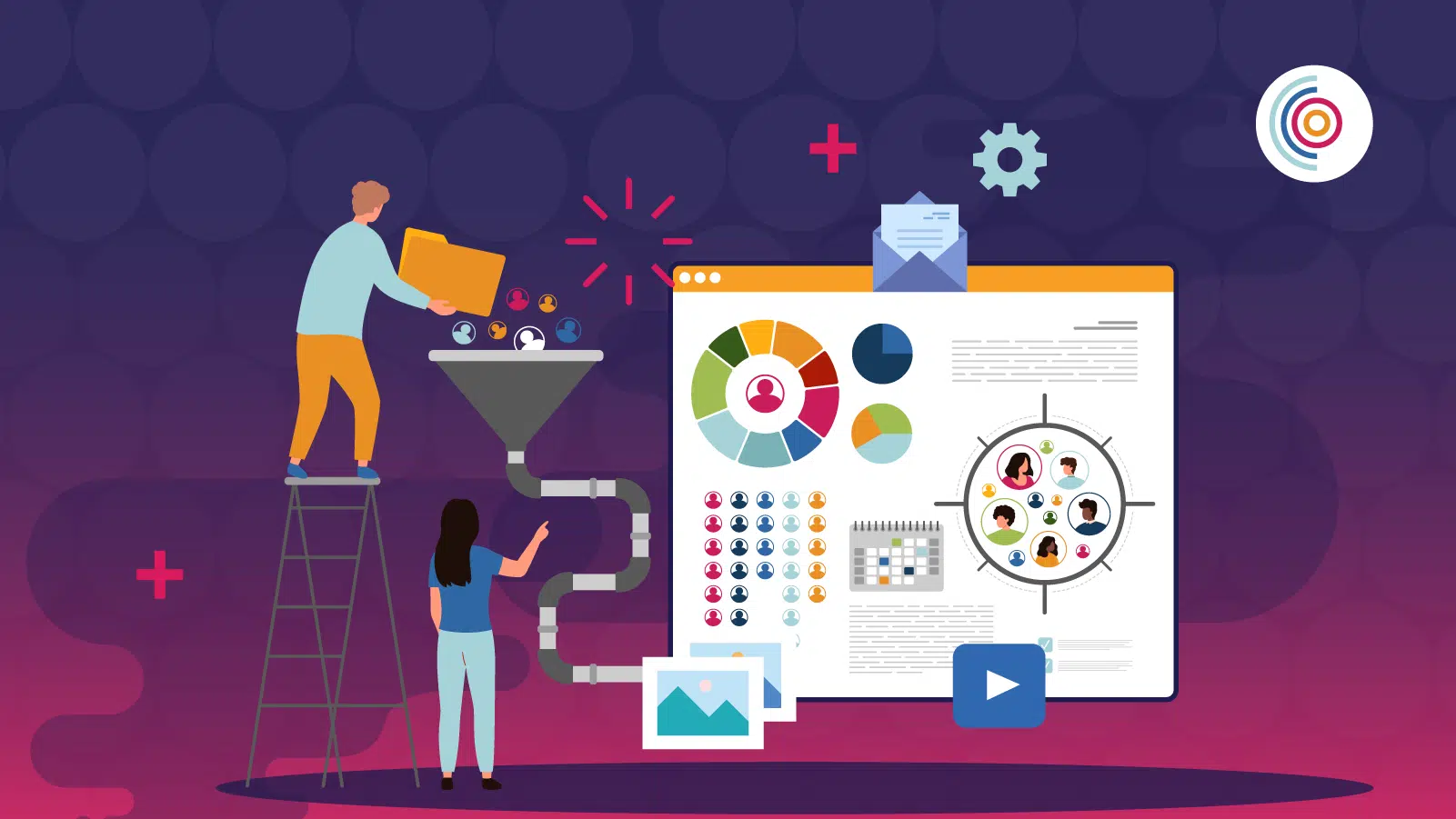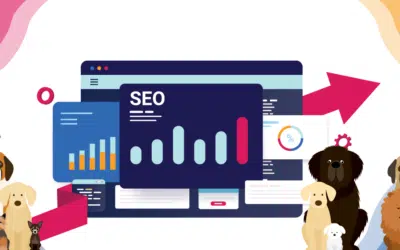For any brand or company looking to get the most bang out of their marketing buck, digital advertising is certainly not a channel to be overlooked. Understanding the right digital advertising options however for each stage of the marketing funnel is crucial for driving effective results. From raising brand awareness to acquiring new customers and activating their potential, each phase of the funnel demands a tailored approach. In this blog, we’ll explore the different digital advertising strategies that can be leveraged at every level of the marketing funnel. By aligning your campaigns with the specific goals of awareness, acquisition, and activation, you can maximize your reach, engage your audience more effectively, and ultimately drive growth for your business.
Awareness Level Digital Advertising
In the awareness stage of the marketing funnel, the primary goal is to capture the attention of a broad audience and introduce them to your brand. These customers may have heard of your brand previously or in many cases, are not aware that your company even exists. This initial phase is crucial for building brand recognition and piquing interest among potential customers. Several digital advertising strategies can be particularly effective in this stage, including display advertising, social media advertising, and video advertising. Each of these strategies offers unique advantages in terms of audience targeting and ad creative, and the choice of platform can significantly impact the success of your campaigns.
Display Advertising is a powerful tool for increasing brand visibility. These ads, often in the form of banners or images, can be placed on various websites, apps, and social media platforms. The ad creative should be visually appealing and straightforward, easy to understand and digest, with bold headlines and strong visual elements to attract attention and convey your brand message quickly. Display advertising is often cheap, meaning you’ll pay less per impression than other advertising types like search ads for example.
To get started with display advertising savvy marketers will use networks like Google to select the best places for ads to go programmatically. These networks will put your ads on thousands of websites around the web depending on a variety of settings, demographic and company data provided.
Social media advertising is In many ways display advertising. It’s primarily images that go on social media platforms versus websites that the programmatic network selects. Social media ads offer unparalleled opportunities for targeting and engagement. Platforms like Facebook, Instagram, and LinkedIn provide robust targeting options, allowing you to reach users based on age, gender, location, job title, interests, and behaviors. For example, on Facebook and Instagram, you can create custom audiences from your existing customer lists or website visitors and use lookalike audiences to reach new users with similar characteristics. The creative strategy for social media ads should focus on creating engaging and shareable content. Short videos, carousel ads showcasing multiple products, and interactive formats like Instagram Stories can capture attention and encourage users to interact with your brand.
Video Advertising is particularly effective for storytelling and creating an emotional connection with your audience. Platforms like YouTube, TikTok, and Facebook allow you to target users based on their viewing habits and interests. The ad creative for video should be engaging from the very first few seconds to prevent users from skipping the ad. Focus on telling a compelling story, using high-quality visuals and sound to make a lasting impression. Including a clear call-to-action (CTA) at the end of the video can also drive further engagement. Using tools like YouTube (Google) is valuable because you can target potential new customers for your awareness ads based on their demographics and interests including other videos that they watch.
Influencer marketing can also be a highly effective strategy in the awareness stage. Partnering with influencers who have a strong following and align with your brand can help you reach new audiences in an authentic way. Influencers can create content that introduces your brand to their followers, generating buzz and interest. The key to successful influencer marketing is choosing the right influencers whose audience matches your target demographic. The content should be genuine and seamlessly integrate your brand message to resonate well with the influencer’s followers. Most influencer marketing happens through social media however anyone with an audience can be a potential influencer.
Acquisition Level Digital Advertising
In the acquisition stage of the marketing funnel, the focus shifts from generating awareness to driving potential customers to take specific actions, such as making their first purchase or providing their email addresses through a form submission. This stage is crucial for converting interest into tangible results. Effective digital advertising strategies at this stage include search engine marketing (SEM), retargeting ads, lead generation campaigns, and partnerships with influencers. Each strategy involves precise audience targeting and compelling ad creatives to ensure maximum conversion.
Search Engine Marketing (SEM) is a powerful method for capturing high-intent leads. By bidding on keywords relevant to your business, you can ensure your ads appear at the top of search engine results pages (SERPs) when potential customers are actively searching for products or services like yours. Platforms like Google Ads allow you to target specific demographics, geographic locations, and even device types. The ad creative for SEM should be concise and directly address the user’s search query, with a clear and compelling call-to-action (CTA) such as “Shop Now” or “Get a Free Quote.” Utilizing ad extensions, such as site links, call buttons, and additional text, can provide more information and encourage users to click through.
Retargeting Ads are essential for re-engaging users who have previously visited your website but did not complete a desired action. These ads follow users as they browse other websites or social media platforms, reminding them of their interest in your products or services. Platforms like Facebook and Google Ads offer robust retargeting capabilities, allowing you to create audience segments based on specific actions, such as viewing a product page or adding an item to the cart. The creative for retargeting ads should be personalized and include reminders of the products or services the user viewed, along with special offers or discounts to incentivize them to return and complete their purchase.
Lead Generation Campaigns are designed to capture potential customers’ information, such as their email addresses, in exchange for valuable content or offers. This can be done through lead magnets like eBooks, webinars, free trials, or discount codes. Social media platforms like Facebook, LinkedIn, and Instagram offer specific lead generation ad formats that allow users to submit their information without leaving the platform. The targeting for these campaigns should focus on users who have shown interest in similar content or have interacted with your brand before. The ad creative should highlight the value of the lead magnet, using eye-catching visuals and a strong CTA, such as “Download Now” or “Sign Up Today.”
Influencer Partnerships can also drive acquisitions by leveraging the trust and authority influencers have with their audience. Influencers can create content that encourages their followers to try your product or sign up for your service, often including a unique discount code or link to track conversions. When selecting influencers, it’s important to choose those whose audience aligns closely with your target demographic. The content should be authentic and seamlessly integrate your brand message, with a clear CTA that directs followers to take action, such as visiting your website or making a purchase.
Social Media Advertising continues to play a significant role in the acquisition stage. Platforms like Facebook, Instagram, and LinkedIn provide advanced targeting options that allow you to reach users based on detailed criteria, such as their behaviors, interests, and past interactions with your brand. Dynamic ads, which automatically show products based on user behavior, can be particularly effective. The ad creative for social media acquisition campaigns should be highly engaging and directly address the user’s needs or pain points. Highlighting customer testimonials, product benefits, and limited-time offers can drive higher conversion rates.
Acquisition Level Digital Advertising
In the activation stage of the marketing funnel, the focus is on driving customers to make purchases, including repeat purchases, thereby maximizing overall conversion value. This stage involves engaging customers who have already shown interest or have made an initial purchase, encouraging them to continue interacting with the brand and increasing their lifetime value. Effective digital advertising strategies in this stage include personalized email marketing, loyalty programs, retargeting ads, dynamic product ads, and social proof campaigns. Each strategy should be tailored to target the right audience with compelling ad creatives and optimized platform choices.
Loyalty programs are an effective way to incentivize repeat purchases and increase customer retention. Digital advertising can promote these programs through targeted ads on social media, email campaigns, and in-app notifications. Platforms like Facebook and Instagram allow for precise audience targeting based on customer behavior and loyalty status. The creative strategy should focus on showcasing the benefits of the loyalty program, such as earning points, receiving exclusive discounts, and accessing special offers. Using testimonials and highlighting real customer experiences can add credibility and appeal.
Retargeting Ads are crucial for re-engaging customers who have previously interacted with your brand but haven’t made a recent purchase. By using data from past interactions, you can create personalized retargeting ads that remind customers of the products they viewed or purchased before. Most ad platforms offer advanced retargeting options that allow you to segment audiences based on their behavior on your website or app. The ad creative should feature the products the customer showed interest in, along with personalized offers or discounts to incentivize them to return and complete a purchase.
Dynamic Product Ads are highly effective for showcasing relevant products to individual customers based on their browsing history and preferences. These ads automatically display products that are most likely to interest each user, making them a powerful tool for driving repeat purchases. Platforms like TikTok, Facebook and Google Shopping are ideal for running dynamic product ads. The creative strategy should focus on high-quality images, clear product descriptions, and compelling CTAs. Including customer reviews and ratings can also enhance credibility and encourage conversions.
Social Proof Campaigns leverage the power of customer testimonials, reviews, and user-generated content to build trust and encourage purchases. Advertising these campaigns on social media platforms like Instagram and Facebook can be particularly effective, as these platforms allow you to reach a wide audience with engaging content. The targeting strategy should focus on users who have previously interacted with your brand or have shown interest in similar products. The ad creative should highlight positive customer experiences, showcase high ratings, and feature real-life applications of your products. This approach can build trust and encourage potential customers to make a purchase.
In-App advertising can be a valuable strategy for driving repeat purchases, especially for businesses with a mobile app. By using push notifications and in-app messages, you can deliver personalized offers and product recommendations directly to customers. Targeting can be based on in-app behavior, purchase history, and user preferences. The creative strategy should focus on delivering concise and relevant messages with clear CTAs, encouraging users to explore new products or take advantage of special offers.
Conclusion
Smart brands understand the importance of leveraging digital advertising at every stage of the marketing funnel to achieve maximum impact and drive growth. At the awareness stage, they utilize strategies like display ads, social media advertising, and video ads to capture attention and build brand recognition. During the acquisition stage, they focus on converting interest into action with tactics such as search engine marketing, retargeting ads, and lead generation campaigns. Finally, in the activation stage, they drive purchases and foster customer loyalty through personalized email marketing, loyalty programs, dynamic product ads, and social proof campaigns.
By implementing a comprehensive full-funnel approach, these brands ensure they are reaching their target audience effectively, nurturing potential customers, and encouraging repeat business. If your company is looking to enhance its digital advertising efforts and achieve similar success, Conway Marketing Group is here to help. Our expertise in full-funnel digital advertising can guide you through each stage, creating customized strategies that align with your business goals. Contact us today to get started on building a robust digital advertising campaign that drives results from awareness to activation.



